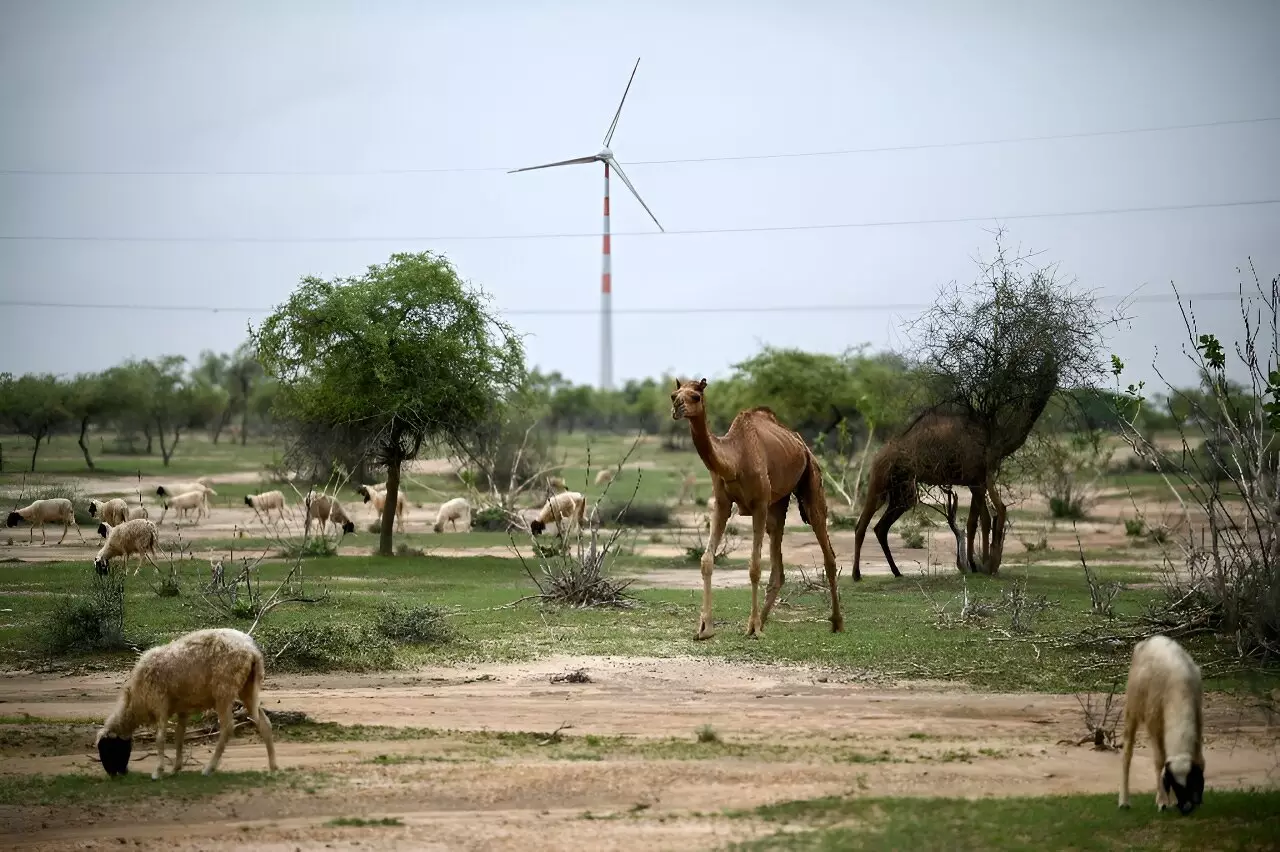The whirring wind turbines in India’s Thar desert may supply critical green energy for the country, but those living in their shadows argue that it comes at their expense. People like 65-year-old livestock herder Nena Ram feel that the turbines are useless to them, as they disrupt their age-old farming systems. In western Rajasthan state, where most of the Thar desert is located, the installation of wind turbines has led to the loss of grazing lands and damage to sacred groves known as “orans”. These areas, protected by the community for centuries, collect vital water resources that are essential for their livestock-based economy of camels, cattle, and goats. However, heavy construction trucks have been damaging these water sources, ultimately reducing grasslands and further drying out the land.
Farmers like Ram find themselves in a difficult position. They are not the fume-belching giants of India’s coal industry, yet they still face the consequences of climate change and the mitigation efforts to combat them. The Jaisalmer district in Rajasthan is home to hundreds of turbines, making it one of India’s largest onshore wind farms capable of providing five gigawatts (GW) of wind power to the grid. While companies like the Adani Group and Suzlon claim to support India’s transition to renewable energy and offer assistance to impacted communities, farmers express bitterness at having their grazing lands taken away for turbine construction purposes. The installation of power lines in the region has not resolved the issue, as power cuts remain frequent, leaving residents in darkness for hours at a time.
Environmental Impact and Loss of Biodiversity
As India continues to ramp up its renewable energy capacity with the goal of reaching 500 GW by 2030, villages near wind turbines see them as intrusive “white structures”. Environmental activists argue that the Thar desert is not a dead zone but a biodiverse area. Critically endangered species like the Great Indian Bustard are facing extinction due to collisions with power lines. The monumental brown-and-white birds have experienced a significant decline in numbers over the past 25 years, with just 150 left nationwide. The installation of windmills and high-tension wires has only increased their mortality rate. Despite efforts to protect these species, such as undergrounding power lines in key bird breeding zones, the government’s prioritization of renewable energy targets has stalled these conservation measures.
India’s commitment to achieving a net-zero-emissions economy by 2070 sets a bold and ambitious goal for the country. However, the rapid expansion of renewable energy plants, particularly wind power, has raised concerns about the environmental and social costs involved. Villagers near wind farms are questioning the trade-offs between clean energy production and the preservation of their way of life and local ecosystems. As India faces increasingly oppressive temperatures and the devastating impacts of climate change, striking a balance between renewable energy development and environmental conservation remains a complex challenge.
The push towards green energy in India’s Thar desert highlights the multifaceted issues surrounding climate change mitigation and adaptation. While the shift away from fossil fuels is crucial for combatting global warming, it is essential to consider the localized impacts on communities and biodiversity. Finding sustainable solutions that prioritize both clean energy generation and environmental protection is key to achieving a truly green future for India.


Leave a Reply